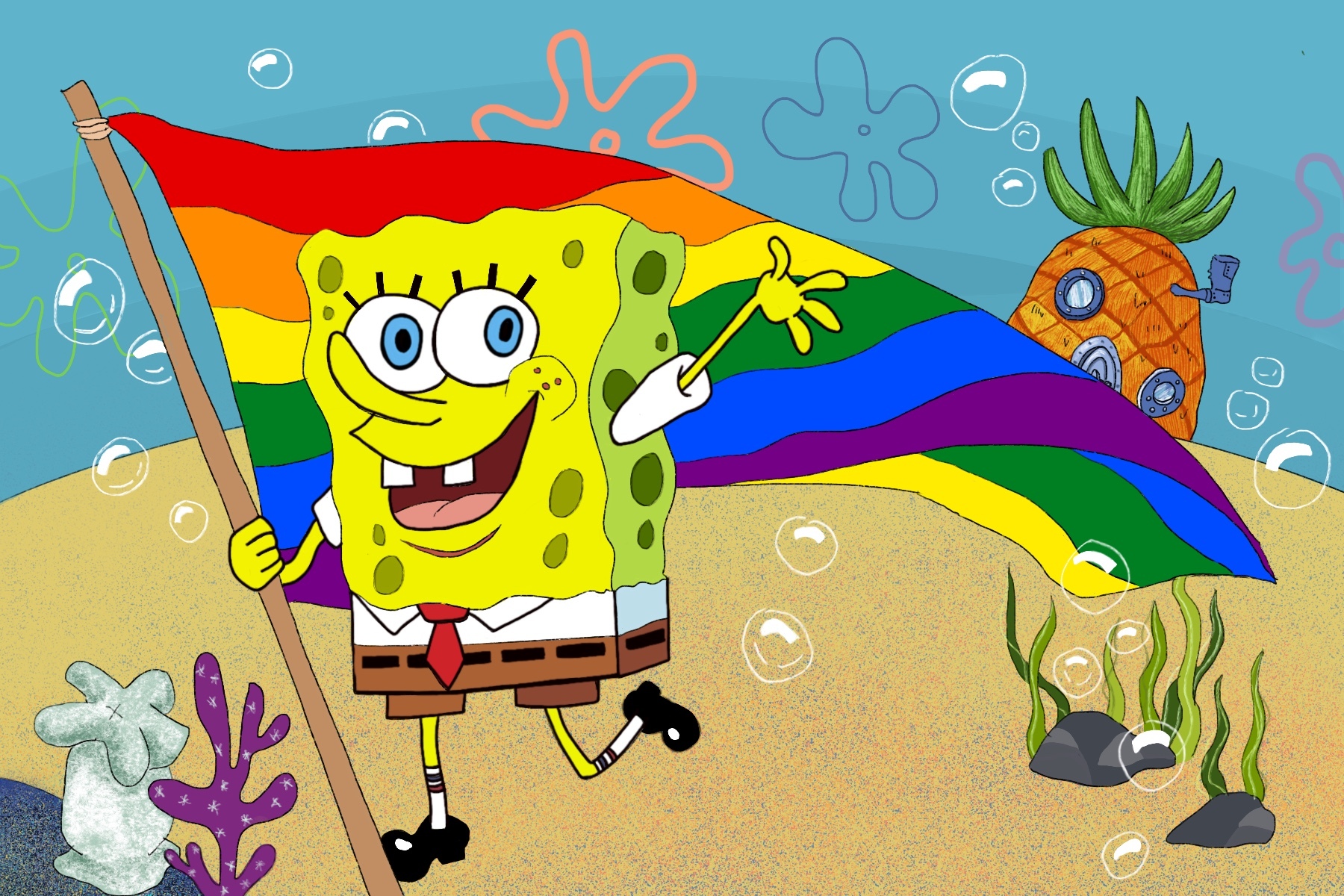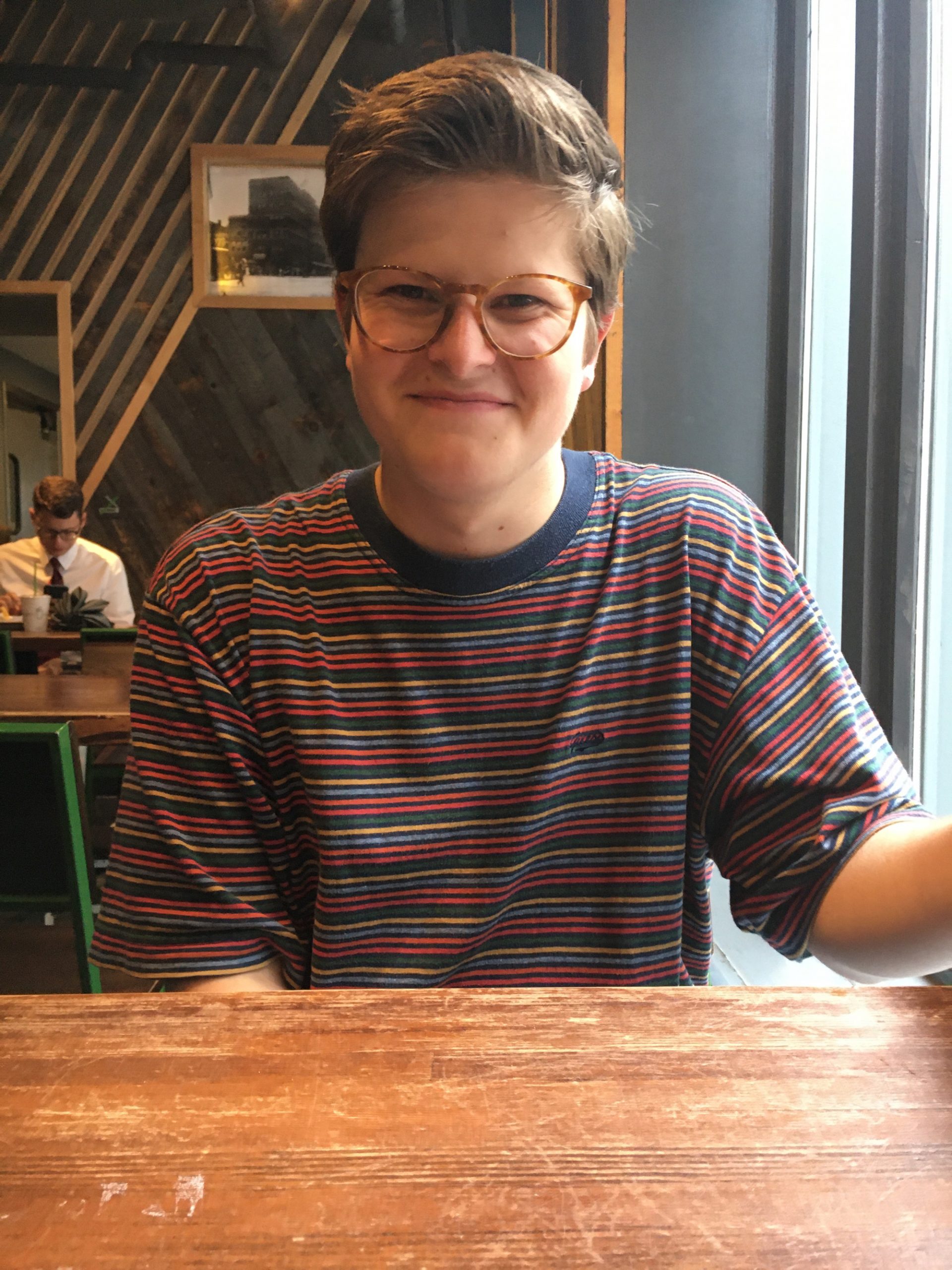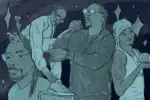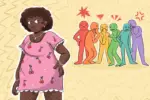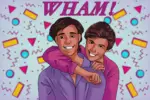When looking at LGBT characters on television, specific traits often ensure they will appear palatable to a variety of audiences. Sexuality rests on an undefined and wide-reaching spectrum, yet most media resorts to rehashing the same interpretation of queerness: campy men and women who exist to challenge the status quo and offer a sassy comment when the leading characters fumble.
Television typically portrays gay characters to check a box instead of championing genuine inclusion. Writers quickly work to qualify non-normative sexual identities, therefore dehumanizing characters for performative measures.
Nickelodeon took to Twitter to challenge such a preconceived notion, whether intentionally or not, when posting: “Celebrating Pride Month with the LGBTQ+ community and their allies this month and every month.”
Celebrating #Pride with the LGBTQ+ community and their allies this month and every month 🌈
(🎨: by @ramzymasri) pic.twitter.com/pENmTaQB0h— Nickelodeon (@Nickelodeon) June 13, 2020
Bathed in an iridescent glow, SpongeBob commands the post with his buck-toothed grin and a tie not unlike the rainbow flag. Korra, a canonically bisexual character from another series, “The Legend of Korra,” accompanies the tweet alongside Michael D. Cohen, a transgender actor who plays Schwoz Schwartz on “Henry Danger.” Nowhere does the tweet indicate SpongeBob has a particular sexual alignment, but contextually, one could draw up a founded conclusion.
Out of the network’s numerous successes, why include the globally-recognized eccentric?
Through incorporating characters who challenge an assumed heterosexual identity in children’s programming, young viewers learn to associate queerness with normalcy. In the case of SpongeBob, suggesting his identity years after the show’s debut illustrates there is no “before and after” persona that accompanies coming out. The sea sponge remains exactly as he was.
Introducing these concepts to closeted viewers underlines that being gay is not determined solely by sexual wants and needs. Defining LGBT characters by their humanity progressively undermines notions of “unconventionality” or moral failure, both by-products of a decades-long culture war powered by the religious right.
Same SpongeBob, new tricks
In 2005, the We Are Family Foundation (WAFF), a nonprofit created in response to 9/11, produced a video in which television characters encourage sentiments of inclusion and diversity. Of course, Sister Sledge’s 1979 hit “We Are Family” graces the video with its soulful traces of disco and R&B. The foundation’s official website describes the production as a “musical message for all.”
Amongst the characters, inevitably, was SpongeBob SquarePants, and far right groups had a field day. Given the song’s roots in the LGBT movement, conservatives detested the video for forcing an alleged homosexual agenda.
Dr. James Dobson, founder of Focus on the Family, stated that “[WAFF’s] inclusion of the reference to ‘sexual identity’ within their ‘tolerance pledge’ is not only unnecessary but it crosses a moral line.”
Speculation surrounding SpongeBob and his sexuality might be a new development on Twitter, but the WAFF discourse indicates an ongoing dialogue. During this period, the show’s creator, Stephen Hillenburg, also negated any suggestions about the porous character’s sexuality.
“It doesn’t have anything to do with what we’re trying to do. We never intended them to be gay… We’re just trying to be funny,” said Hillenburg.
The creator’s statement complicates Nickelodeon’s recent tweet, but Hillenburg easily could have been calming the waters for the sake of public relations.
Regardless, the issue at hand still asserts itself: Why should show creators respond to speculation as if it’s taboo? Hillenburg’s response implies that an agenda must underpin the inclusion of queer characters.
Whose right is it?
Though Pride Month caters specifically to the LGBT community, large corporations ceaselessly reshape the movement into a marketing ploy; companies rebrand tennis shoes and designer bags with rainbow flags, a hallmark of the queer community. In doing so, one’s identity becomes another item on a receipt. Multimillion dollar labels elect to “celebrate” this way, and a crucial question surfaces: Who is this benefitting?
When Nickelodeon tacitly declared SpongeBob’s sexuality, I understood the downplayed message as a move of solidarity rather than an announcement catered to the “woke” faction of mass media. Contrary to those businesses who commodify Pride Month, Nickelodeon digs deeper into a cultural history of visibility.
Yes, the network rakes in millions annually, and yes, the move certainly put them in a glorious limelight. However, in terms of benefit, viewers are on the receiving end. At the end of the day, representation is still representation.
Columnist Emma Teitel challenges this notion, arguing that effectively “outing” familiar and beloved characters feeds controversy and allows for critics to ignite debate over it. To remedy this issue, she suggests creating new and fresh LGBT characters that are openly queer from the get-go.
“This does far more for inclusion because it suggests to kids that a character’s sexual orientation or gender identity is perfectly ordinary rather than a cause for … debate,” Teitel writes.
Why should we consider potential controversy worse than queer exclusion? Choosing to ignore a group of people for the sake of keeping opponents happy inherently bolsters homophobia, and it proves to prejudiced people that outcry is all it takes to ensure change will not happen.
Rebecca Sugar’s “Steven Universe,” an animated series geared toward younger viewers, broaches the subject without ever directly putting a name to queerness. Lesbian women marry, boys wear dresses and writers rightfully treat it as nothing more than the status quo. Programs like Sugar’s are the perfect stepping stone for LGBT children who want to understand themselves better. It doubly reassures viewers that they are no different from straight peers, even if it might feel that way.
If anything, homophobia resulting from this controversy proves just how necessary it is to begin educating the world on LGBT inclusion at a young age. Consequently, the cultural conversation raises an important question, not of the sponge’s identity, but one that investigates how viewers respond.
With over 20 years of screen time, the Twitter speculation demonstrates to audiences that the titular character remains unchanged; even before they knew of his supposed homosexuality, they still loved him nonetheless.


